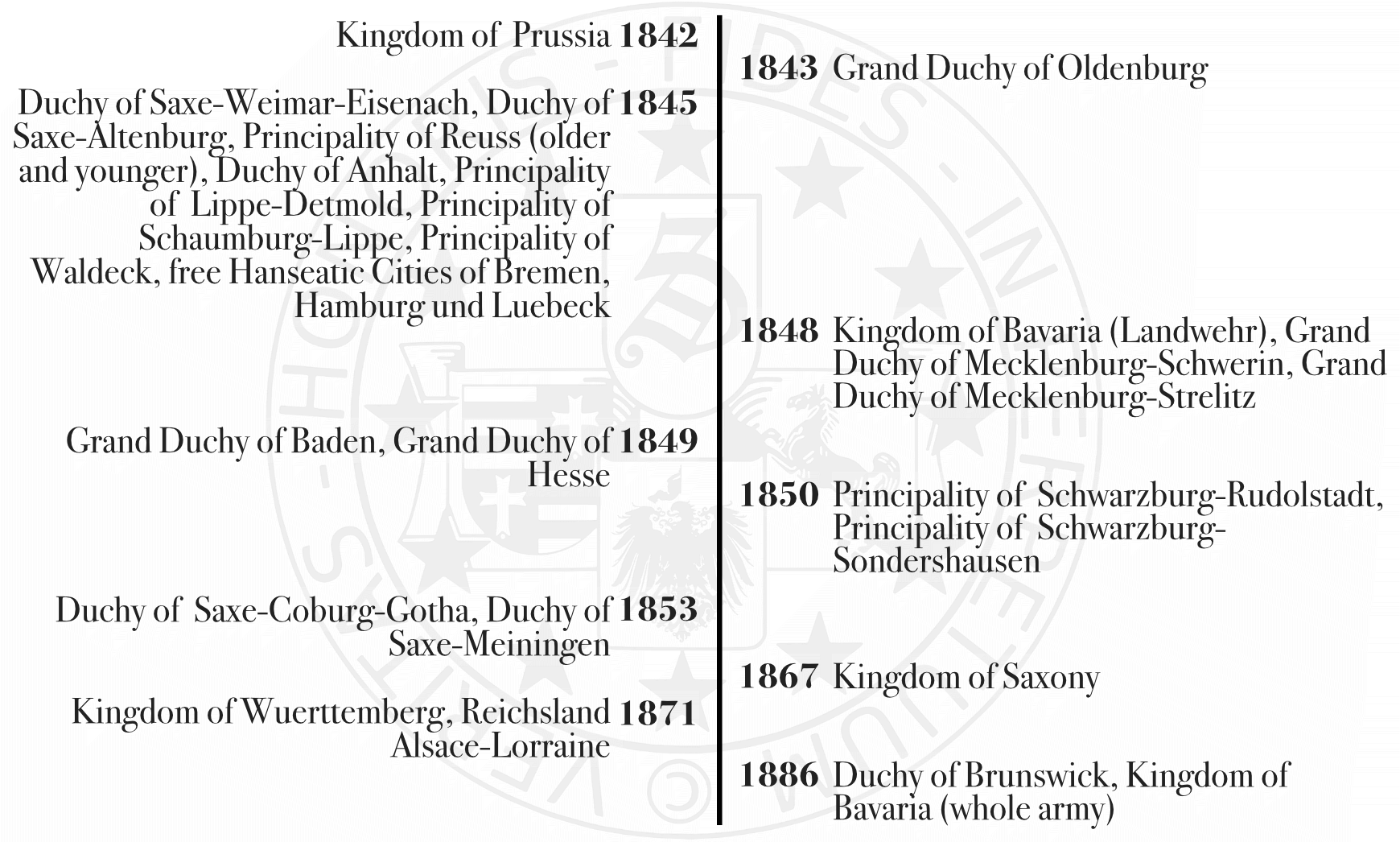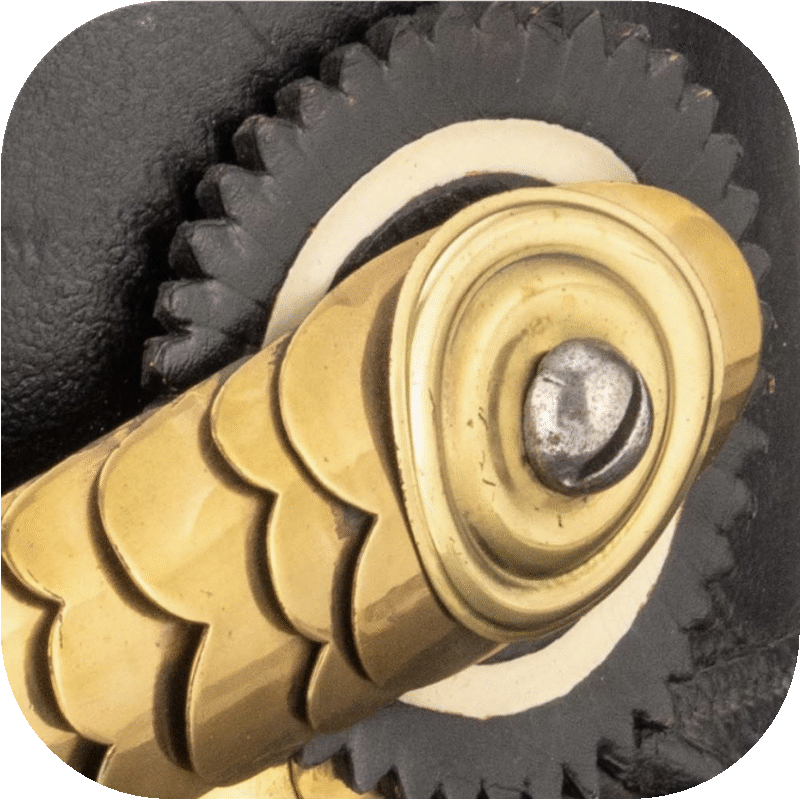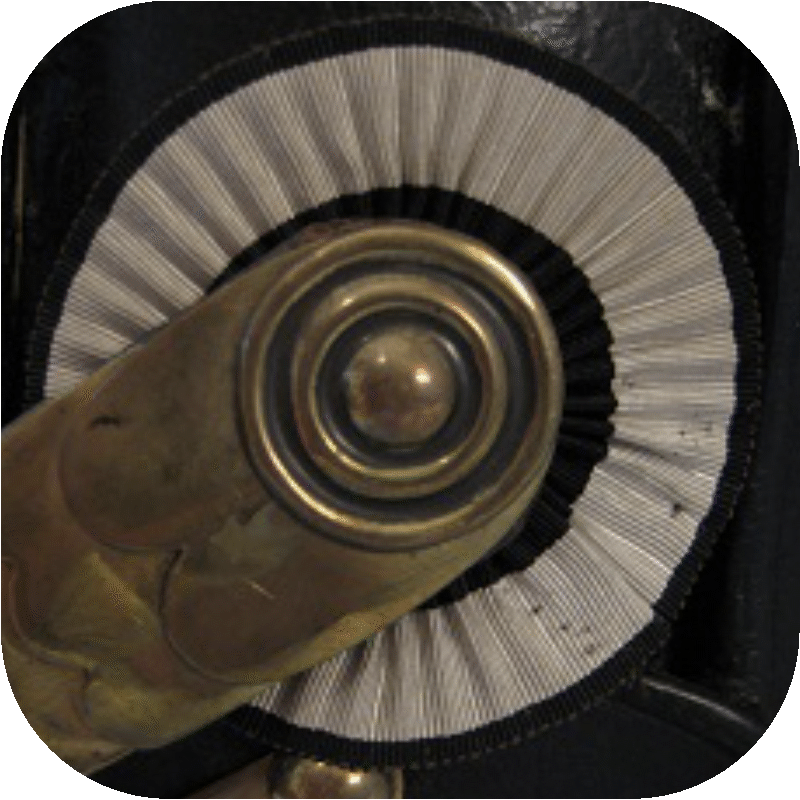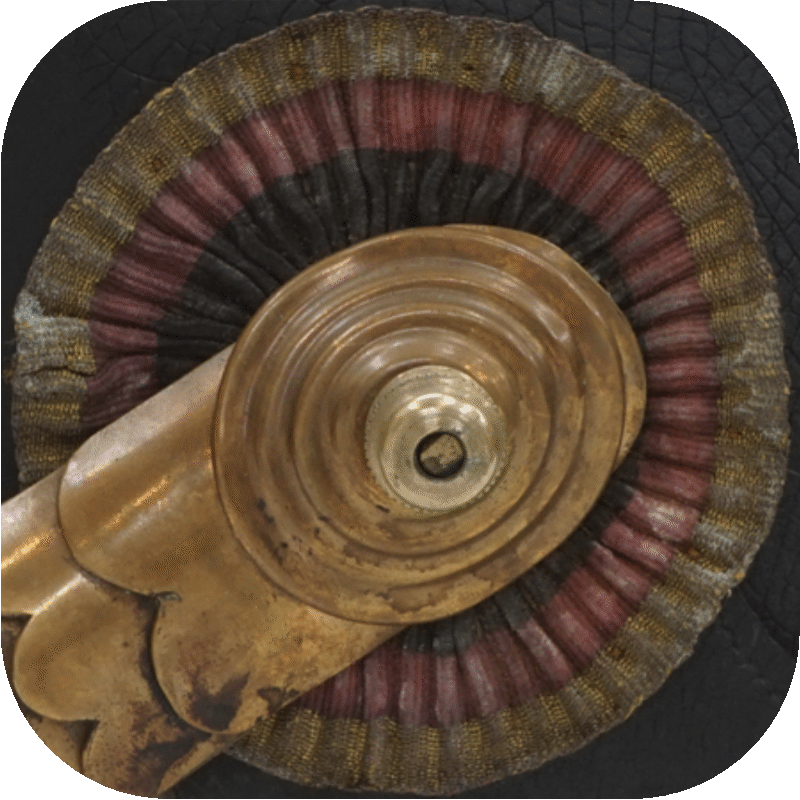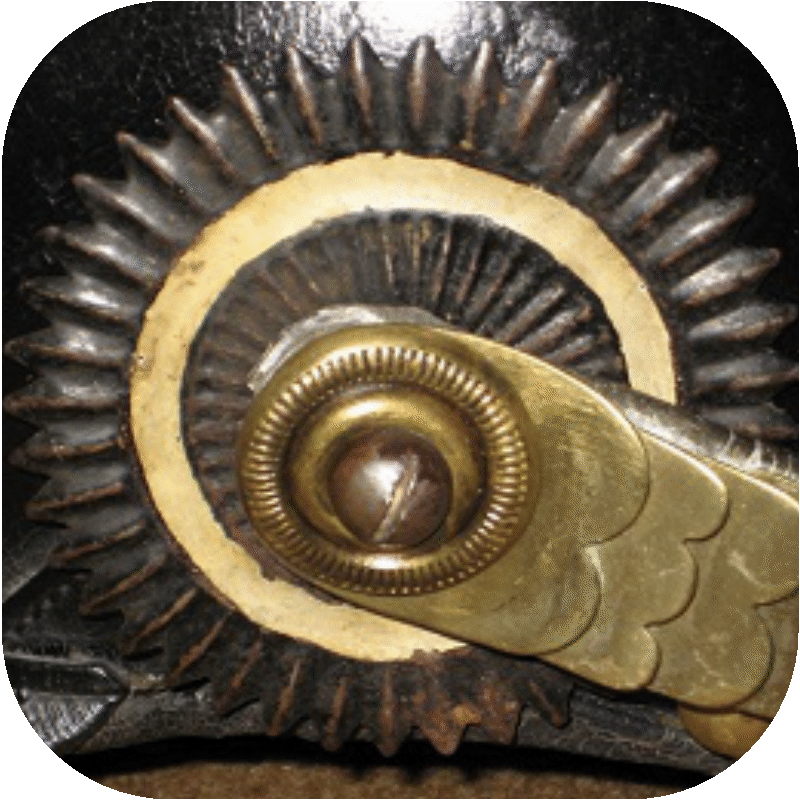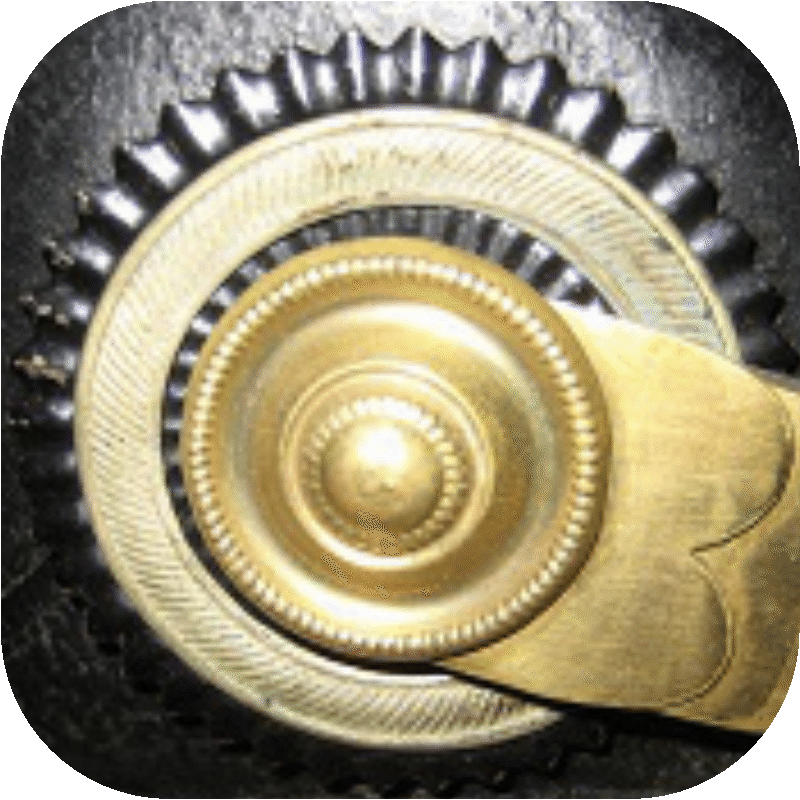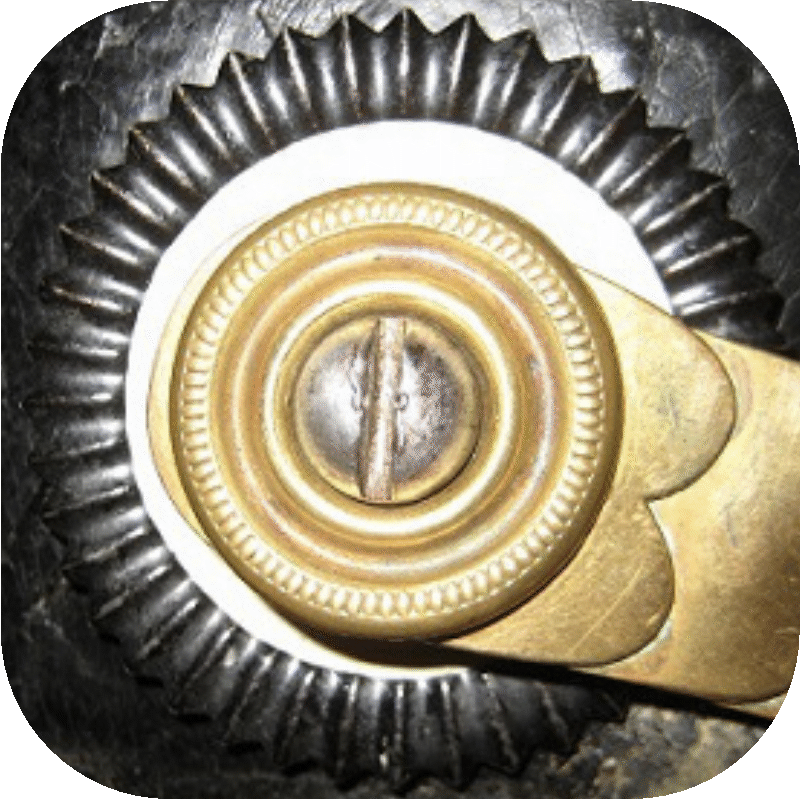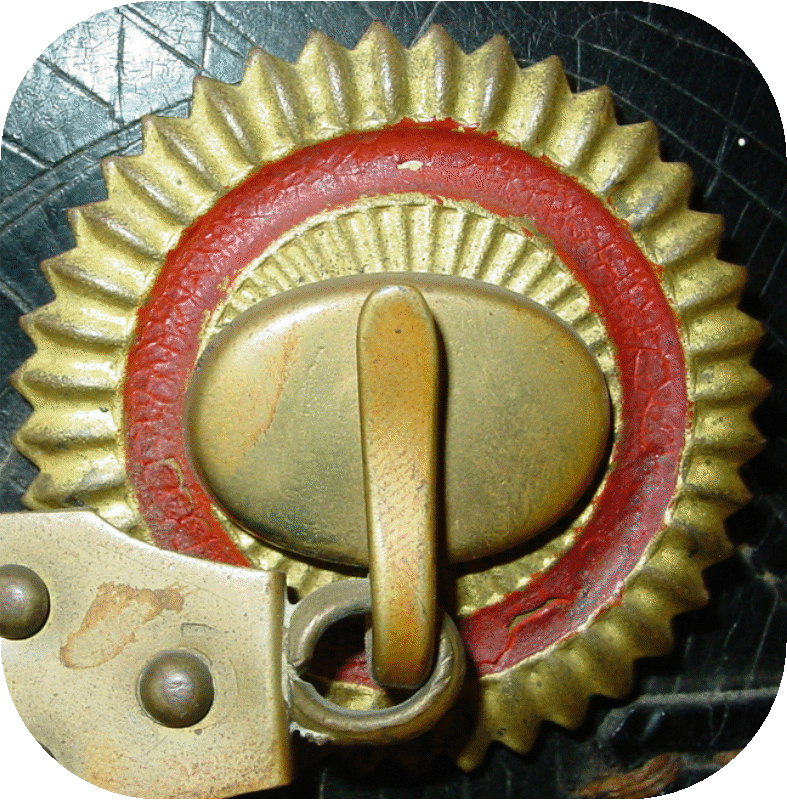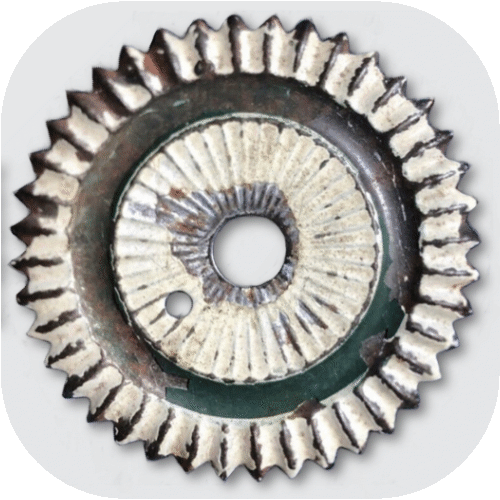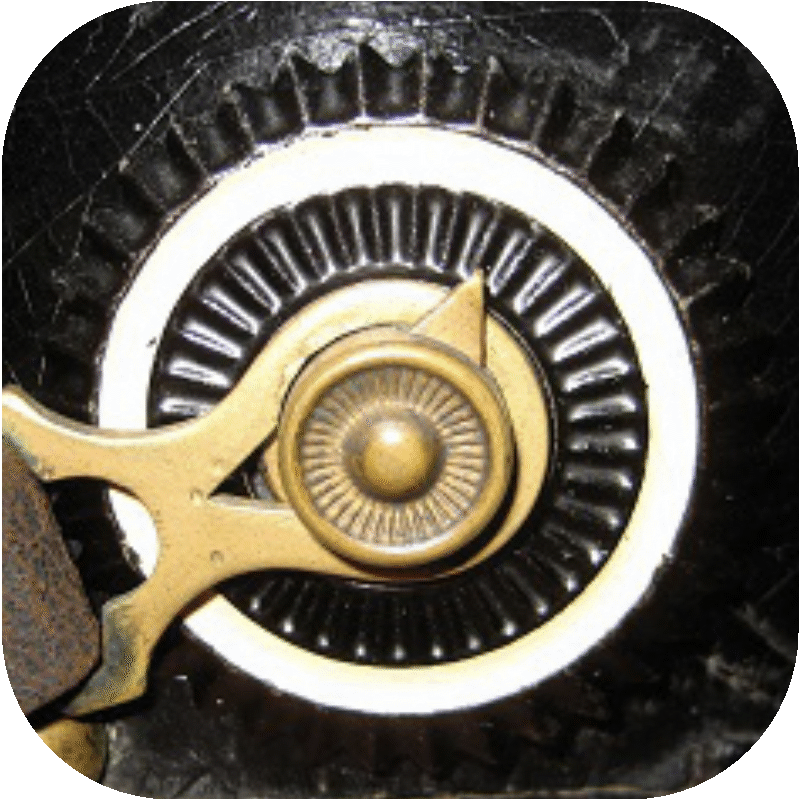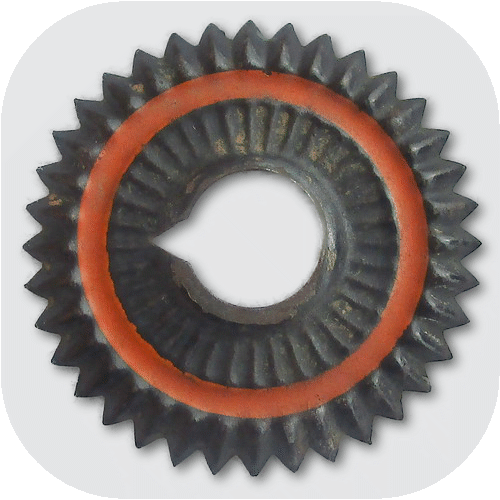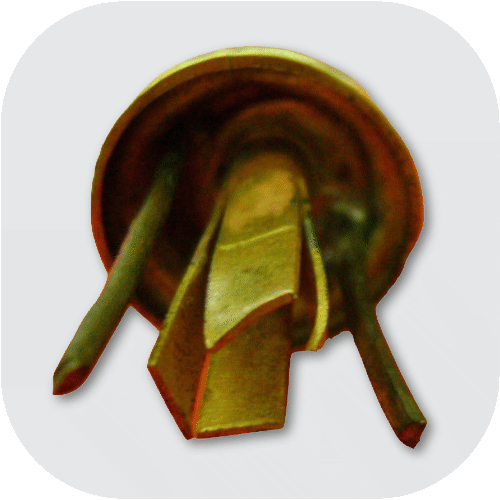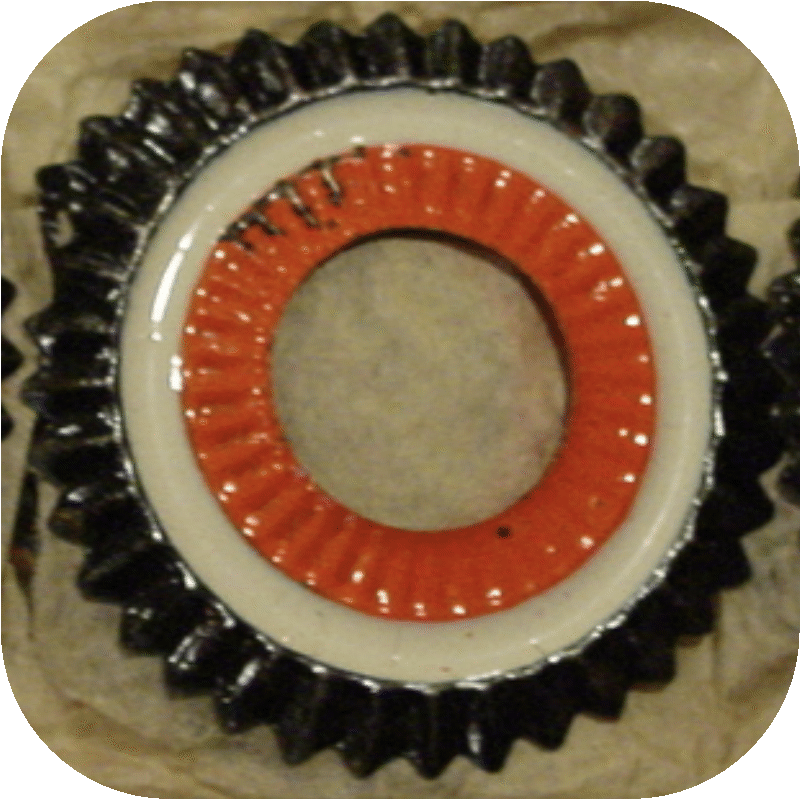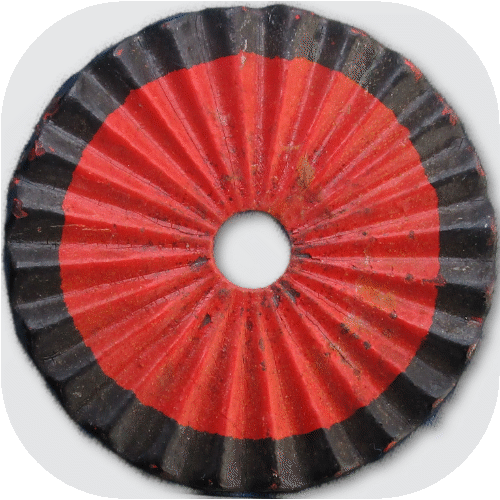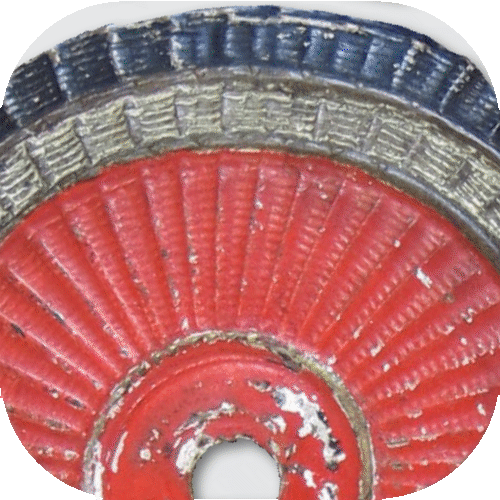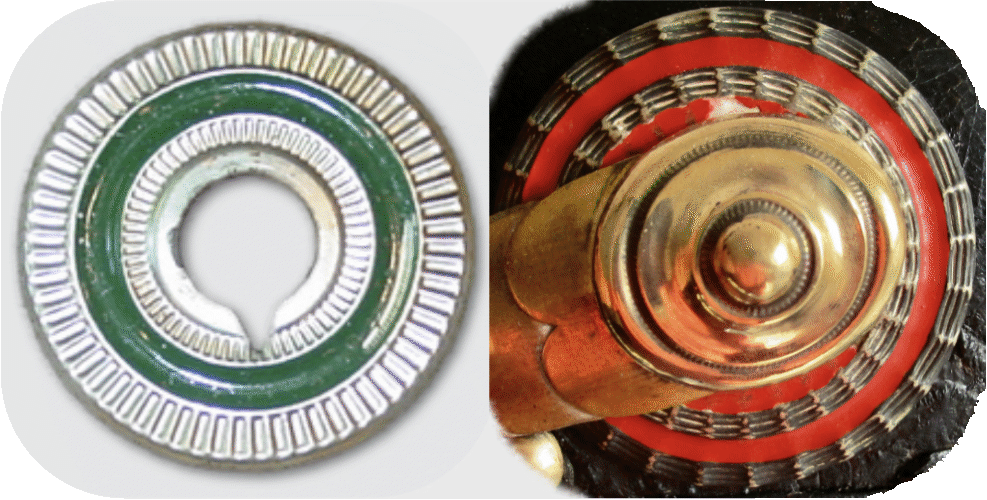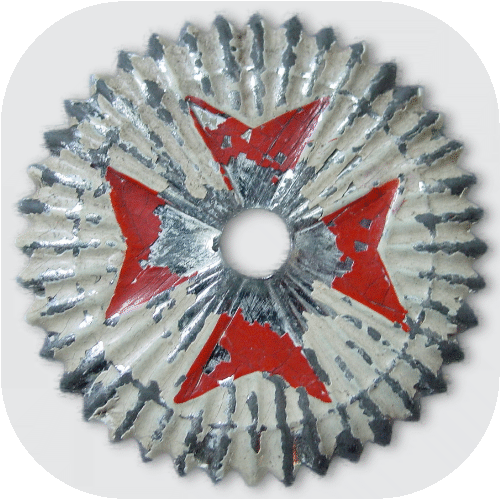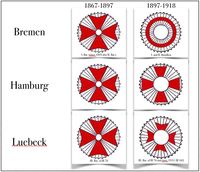The history of the Pickelhauben cockades
FIRST OF ALL, I WOULD LIKE TO THANK THE FOLLOWING PEOPLE FOR THEIR KIND SUPPORT, AS I WAS ALLOWED TO USE SAMPLE PICTURES AND INFORMATION FROM THEM. MY THANKS GO TO JAMES LEBRASSEUR, JOHN MANN, JOHN SCHULER, TONY SCHNURR, BERNARD VITTE AND BRIAN LORÉE
As early as the age of knights, some kind of insignia was worn on the helmet. This was later continued in the form of the cockade on the headgear. Originally, in the 17th century, colored ribbons were worn on the headdresses of individual troop bodies to differentiate the companies. These were first used to make rosettes by crossing the ribbons and fastening them to the headdress with a button. For military purposes, these rosettes were made of more durable materials such as leather or sheet metal and painted in the national colors. This resulted in the last known form of cockade.
For a long time in Prussia and in the German states, there was only the national cockade worn on the right side, which, as already mentioned, was always designed in the colors of the fatherland. However, with the signing of the military conventions for the North German Confederation and the founding of the German Empire (see 1867-1871), the armies of many smaller German states were integrated into the Prussian Army. The soldiers of these states therefore wore the Prussian cockade on the left, and the cockade of their home country on the right. Long after the founding of the Empire, the German Imperial Cockade in black-white-red, or black-silver-red for the officers, was generally introduced in 1897, the year in which the founder of the Empire, Kaiser Wilhelm I, would have celebrated his 100th birthday. With the introduction of this „Reichskokarde“, the state cockade switched to the left side and the Reichs-Kokarde took the place on the right side of the helmet. In the case of the non-Prussian countries, whose armies were integrated into the Prussian Army around 1870, the soldiers wore the cockade of their home country on the left side from 1897 onwards and discarded the Prussian cockade.
The new types of helmets (Pickelhauben) with cockades in the colors of the individual countries, but mostly in the Prussian style, were introduced into the armies of the German states as follows:
The colors of the state cockades (enumeration from inside to outside) of the various German states were as follows:
- Prussia: Black-White-Black
- Bavaria: White-Light Blue-White
- Saxony: White-Green-White
- Wuerttemberg: Black-Red-Black (or red with black edge)
- Baden: Yellow-Red-Yellow (or red with yellow edge)
- Hesse-Darmstadt: White with 2 red rings
- Mecklenburg-Schwerin and Strelitz: Red-Yellow-Blue
- Oldenburg: Blue-Red-Blue
- Saxe-Weimar-Eisenach: Black-Green-Yellow
- Brunswick: Blue-Yellow-Blue
- Anhalt: Green
- The 3 Grand Duchies of Saxony: White-Green-White (until 1867)
- Schwarzburg-Rudolstadt: White-Blue -White (until 1867)
- Schwarzburg-Sondershausen: White-Blue-White (until 1867)
- Reuss: Black-Red-Yellow
- Schaumburg-Lippe: Blue-Red-White (or white-red-white)
- Lippe-Detmold: Yellow-Red-Yellow (or red with yellow edge)
- Waldeck-Pyrmont: Black-Red-Yellow (or red with yellow edge)
- Hamburg, Bremen, Luebeck: White cockade with red Maltese Cross (until 1897)
In 1867, the following state cockades were modified:
- The 3 Saxon Grand Duchies: Green-White-Green
- Schwarzburg-Rudolstadt: Blue-White-Blue
- Schwarzburg-Sondershausen: White-Blue-White
In 1897 the following state cockades were modified:
- Saxe-Weimar-Eisenach: Black-Yellow-Green
- Bremen: The cockade no longer had a cross in the middle, colors were now - White-Red-White -
- Hamburg: The Maltese cross no longer went to the edge of the cockade, but ended slightly above half the radius of the cockade now
- Luebeck: The Maltese cross no longer went to the edge of the cockade, but ended slightly above half the radius of the cockade now - White-Red-White -
1842 (Prussia)
In this year the pickelhaube M/42 was introduced in Prussia.
- Enlisted men: The cockade up to the rank of vice sergeant consisted of a blackened, wavy pressed leather disc with a serrated edge and had a diameter of 70 - 75 mm. About 7 - 8 mm from the serrated edge, a white ring about 5 mm wide was painted on (Fig. 1).
- Officers: Sergeants and officers ranks also wore a leather cockade with a diameter of 70 - 75 mm, but instead of the painted white ring of the enlisted cockade, it had a silver-plated affixed metal ring decorated with a diagonal hatching embossing (Fig. 2). This makes the ring look similar to a cord, which was popularly used as a decoration for various objects at that time.
- Officers in Life Cuirassier Rgt. No. 1: Due to the regimental history, the officers of this regiment wore on the metal pickelhaube from the beginning a cockade in old Hessian form, which was described in this essay as "Extra Type 1". It consisted of a silver disc painted black and pressed into folds with an unpainted rim stripe. In addition, they were flattened on one side and from 1896 at the latest were only 50 mm in size (see clothing regulations for officers - part 2 from 1896).
1844:
- NCO‘s with Portepee: On 9.3.1844 non-commissioned officers with portepee were allowed to wear the officer's cockade. Portepee ensigns and music masters, however, had to obtain them at their own expense.
1846:
- Enlisted men: Since the color held badly on the leather, it was permitted to wear cockades from wool by AKO on 27.10.1846 ( Fig. 3).
- Officers: At that time, officers often wore silk cockades (Fig. 4). Since these didn’t last long, however, they later switched to metal cockades.
1848-1851:
During the revolutionary period from 21.3.48 to 14.3.51, a "German cockade" in "black-red-gold" (enumeration from the inside to the outside) was worn on the left (Fig. 5). However, this type of cockade was discarded again after the revolution had failed.
1857:
At the end of 1857, the M/57 pickelhaube was introduced and it was the decided to make the cockades from a more durable material, as the paint on the leather didn't hold up well and the cloth cockades weren't very durable.
Enlisted men: The cockade was now a metal disc pressed into folds, still with a diameter of 70 - 75 mm and a ring painted on in color (Fig. 6). In the center it had a mounting hole of about 8 - 9 mm for attachment under the chinscale. The material was mostly iron sheet. In Baden, however, brass sheet was preferred because it did not have to be painted and only a red ring had to be painted on.
Officers: The officers' cockades were now also made of metal. However, the ring was not painted, but continued to be a silver-plated affixed metal ring (Fig. 7).
Issued helmets: Upgraded helmets mostly kept their old cockades. To save costs, the planned wearing times for cockades, which at that time was 5 years, were respected if possible.
1862:
In 1862, a new model of cuirassier helmet was introduced, which also included a smaller cockade for this type of helmet.
- Metal-Helmets: The cockade diameter for the metal cuirassier helmets, which had previously been identical to the diameter of the cockades on the leather helmets, was reduced to 60 - 65 mm for enlisted men and officers. This cockade diameter was maintained for all metal pickelhauben, also for the later emerging metal helmets of the Jäger zu Pferde (hunters on horseback), until the end.
1867:
- Enlisted men: On 16.3.67 the helmet height was reduced again and with it the cockade diameter was adjusted for the first time. The enlisted men's cockade was reduced to a diameter of about 50 mm (Fig. 8).
- Officers: The officers also received a lower helmet M/67 on 2.5.67. For them, however, a completely new cockade model was introduced, which differed in size and design from the enlisted men's cockade. The "double ring" or "twin ring" cockade had a diameter of 55 mm and a newly designed silver-plated slip-on ring of 5 mm width. This consisted of 2 interconnected rings 2.5 mm wide, with slightly raised thin borders (the inner border was sometimes just dotted). The area between the raised edges was usually embossed with a decorative fishbone pattern (Fig. 9 right). Varying designs, however, suggest some design latitude on the part of the manufacturers. According to the regulations, an approx. 8 mm wide ring should still be visible from the outer serrated edge of the cockade.
- NCO‘s with Portepee: After officers received the double-ring cockade, non-commissioned officers with a portepee continued to wear a cockade in the style of the old officers' cockade. Like the enlisted men's cockade, however, it had a diameter of about 50 mm (Fig. 9, left).
- Saxony introduced the pickelhaube. The Saxon cockades of the previous helmets were adopted unchanged and had a diameter of only 47 mm (2 inches).
1871:
- After the founding of the German Empire, the Kingdom of Wuerttemberg adopted the Prussian-style pickelhaube on 25.9.1871. The Wuerttemberg cockade according to the Baden model continued to be worn, but it was also available according to the Prussian model, with a serrated edge.
- The Prussian helmet was also introduced in Alsace and Lorraine, which were now German territories again.
1867 - 1871:
With the signing of the military conventions of Prussia and many smaller German principalities in 1867/1868, as well as after the founding of the German Empire in 1871, the troops of the smaller German states were integrated into the Prussian army following an army reorganization. In the states with larger armies, the regulations were harmonized with the Prussian army. From then on, the following rules for wearing cockades applied to soldiers of the German Empire:
- The Prussian cockade (right) and the home country cockade (left) were worn by every non-Prussian soldier who served in a Prussian unit that was not stationed in his home country (e.g. special weapons and cavalry of the Thuringian regiments, as their conscripts did their compulsory service in the nearest Prussian units). Furthermore, all citizens from Brunswick, Schwarzburg-Sondershausen, Schaumburg-Lippe, Lippe, Waldeck, the 3 Hanseatic cities (Bremen, Hamburg and Lübeck) and the officers of infantry regiments no. 93 to 96.
- In Bavaria, Prussia, Saxony, Württemberg, Hesse and Mecklenburg, only the state cockade was worn on the right side of the helmet. The same applied to the enlisted men of infantry regiments no. 93 to 96.
- In Oldenburg, officers only wore the Prussian cockade. The Oldenburg enlisted men belonging to the standing army, on the other hand, wore the Prussian and the state cockade on their helmets if they were Oldenburg citizens.
- The enlisted men of the Baden units wore only the Baden cockade on their helmets. The officers of the Baden units wore the Baden and Prussian cockades on their helmets (with the exception of the generals, the general staff and the Prussian officers detached to the 14th Army Corps, all of whom also wore only the Prussian cockade on their helmets).
1886:
After their sovereigns Duke Wilhelm of Brunswick (†1884) and King Ludwig II of Bavaria (†1886) who had previously refused to introduce the pickelhaube, died in quick succession, Brunswick and Bavaria now introduced the helmet. The cockade was made of iron or brass plate in Brunswick, and of nickel silver or iron plate in Bavaria.
1887:
- Enlisted men: With the introduction of the new chinstrap fastening with hook and thorn buckle for the helmet M/87 (Fig. 10), additional small holes were punched in the inner rim of the cockade next to the mounting hole (Fig. 11). These were necessary to fix the hook fastening so that it could not twist. Some older cockades were also retrofitted with the additional hole for the hook fastening.
1891:
- Enlisted men: Since the hook fastening was found to be impractical, a new chinstrap fastening was introduced for the enlisted men in 1891. The M/91 chinstrap fastener consisted of a small cylindrical knob with a backward directed arrow on it (Fig. 12). Through this, the metal loop of the chinstrap, which was provided with a matching notch, could not be lost, because the chinstrap could only be removed facing backwards. For the new fastening, the mounting hole of the cockades was enlarged up to 14 - 15 mm, but the outer diameter in 1891 was still 50 mm (Fig. 13).
- NCO‘s with Portepee: The cockade for NCOs with portepee also still had a diameter of 50 mm and received the enlarged mounting hole of 14 - 15 mm for the new chinstrap attachment. As before, however, it had the silver-plated affixed metal ring in the design of the old officer cockade.
- Issued cockades: Older cockades were simply drilled out and sometimes also provided with a V-shaped notch in order to slide them over the M91 fastening button (Fig. 14). Sometimes, however, only 2 small holes were made next to the small mounting hole of 8 - 9 mm diameter, allowing the cockades to be slid over the locking pins of the M91 button (Fig. 15/16). The latter adjustment even had the advantage that the cockades could not be lost even when the chinstrap was removed.
1895:
- Enlisted men: With the further reduction in height from the new M95 helmet introduced for the foot troops, the cockade diameter was also slightly reduced and was now 48 mm. Since Saxon cockades only measured 47 mm anyway, they weren’t changed further.
- Mounted troops: Since the helmet M95 was not only somewhat lower, but also thinner core leather was used for it, mounted units avoided the helmet M95 for the time being for safety reasons. Thus, they kept the helmet 91 with the thicker leather and also the cockade with 50 mm diameter for a while.
- Officers: Although the lower helmet M95 was also introduced for officers, the officer cockade was not changed. It still had a diameter of 55 mm. However, in the draft of the clothing regulation for officers of 1895, an officer's cockade made of blank leather was listed as well. In the final version of the 1896 clothing regulation for officers, however, a metal cockade was again prescribed. The 1899 version, on the other hand, only included a size specification of 55 mm, without naming a material. So if a leather 55 mm officer's cockade were found on an M95 officer's helmet, it would be extremely rare, but may be original.
1897:
Introduction of the imperial cockade for all ranks. It was worn on the helmet on the right side, while the state cockade moved to the left side. The non-Prussian soldiers, who previously wore the homeland national cockade and the Prussian cockade, dropped the Prussian cockade and now wore only the native state cockade and the imperial cockade. In addition, the diameter of enlisted cockades and those of non-commissioned officers with a portepee, except those for metal helmets and Saxon enlisted cockades, was now reduced to 48 mm (Fig. 13). According to regulations, the ring was no larger than 46 mm in diameter and was still about 5 mm wide
1915:
This year marks the last adjustments to the pickelhaube and with it the cockades for leather helmets. The helmet M15 was introduced for officers and enlisted men.
- Enlisted men and NCO‘s with Portepee: For named troops the cockades did not change.
- Officers: The central mounting hole of the officers' cockade, which had never changed until then, was now also enlarged up to 14 - 15 mm and adapted to the M91 chinscale mount (Fig. 17). The officer's cockade, however, retained its diameter of 55 mm.
- Issue helmets and „Ersatz“ helmets: Older officer’s cockades were adapted similarly to the 1891 cockades for enlisted men. In 1915, those cockades can still be found on the helmets. The different diameters of 50 mm or 48 mm were probably too insignificant, which is why well-preserved cockades of the larger variant remained in use to the last.
- In addition, leather cockades with a diameter of 48 mm can be found sometimes on 1914 BING replacement helmets made of metal! This was done to avoid metallic rattling and scratching of the metal helmet shell
Specific regional features of cockades of individual states
Baden, Saxony, Wuerttemberg, Hesse and Anhalt often used one of the 2 next cockade patterns:
- Extra type 1 (Old Hessian) were one-piece officer's cockades made of thin sheet metal pressed in folds with folded smooth edge. Thin lines in the form of concentric circles were pressed on the disk. This cockade had no ring, only a colored rim (Fig. 18).
- Extra type 2 were one-piece officers cockade made of thin sheet metal with folded edge. There were spokes and closely arranged concentric circles pressed on the disc in the form of thin lines and the fields between the spokes were slightly wavy. About 5 mm from the outer edge, a 5 mm wide ring was highlighted by 2 slightly thicker outlines (Fig. 19 (here an Imperial cockade) or Fig. 20).
- Hessian enlisted men's and officers' cockades were very similar to the Extra types, except that 2 slightly recessed rings were pressed into it, painted red for enlisted men and enameled red for officers (Fig. 21 right).
- Saxon cockades had a diameter of only 47 mm as early as 1867. They were one-piece white cockades made of thin sheet metal with a smooth edge. A narrow ripple pattern was stamped on the disk and about 5 - 6 mm from the rim was stamped an approximately 5 mm wide and somewhat recessed green painted ring. Starting in 1895, "V" shaped cutouts were prescribed on the mounting hole (Fig. 21 left). For officers, the disk was silver and the ring was enameled. After 1895, the Saxon officer's cockades measured 55 mm. Rarely, and contrary to the regulation, enlisted men’s and officer's cockades of Prussian style, with the serrated edge, can also be found on Saxon helmets (probably from wartime).
- Hanseatic cockades had a Hanseatic cross or Maltese cross instead of the 5 mm wide ring (Fig. 22).
- In addition, the cockades just mentioned with a "V"-shaped notch (Fig. 21 left) also existed sometimes on other cockades.
Characteristics of the Hanseatic cockades
In 1867, as with so many German states at that time, Prussia also signed a military convention with the Hanseatic cities of Hamburg, Bremen and Luebeck (Hamburg: 23.6.1867; Bremen and Luebeck: 27.6.1867). The Hanseatic troops were then integrated into the Prussian army and their soldiers from now on wore the standard Prussian helmet with the Hanseatic cockade on the left and the Prussian cockade on the right. The design of the Hanseatic state cockade was in the responsibility of the respective federal rulers, which is why they could look different.
- Bremen: From 1867-1897, Bremen citizens wore the Hanseatic cockade, a white fanned disc with a serrated edge and a red Maltese cross on it. Unlike the "Hanseatic Cross", the "Maltese Cross" had a V-shaped notch at each of the 4 ends of the cross. Bremen citizens served mainly in the Bremen garrison, where the I Battalion of IR 75 was stationed (from 1893 also the II Battalion). Starting in 1897, Bremen citizens wore a Prussian-style cockade, in white with a red ring.
- Hamburg: Hamburg citizens also wore the Hanseatic cockade with the red Maltese cross from 1867-1897. The Hamburg nationals served mainly in the I. and II. Battalion of IR 76 and were stationed in Hamburg. From 1897, the Hamburg cockade showed a true Hanseatic cross.
- Luebeck: Until 1913, Luebeck nationals served in the III Battalion of IR 76, which was stationed in Luebeck. The cockade of the citizens of Luebeck was until 1897, as in Bremen and Hamburg, the Hanseatic one, with the red Maltese cross. After that, the cockade design for Luebeck citizens changed and the Maltese cross no longer went all the way to the edge of the cockade, but only reached a little over half of its radius. In 1913, the newly formed IR 162 was stationed in Luebeck, but the cockade of the Luebeck citizens did not change. Hamburg citizens who served in Luebeck always wore the cockade of Hamburg on their helmets.
Why was the Maltese cross worn on the cockade when it was supposed to be a Hanseatic cross?
However, unfortunately, the Hanseatic cross was never clearly defined in the regulations, which is why it was often shown in the form of a Maltese cross. This was maybe due to the more beautiful design or perhaps also a certain ignorance. But when the Hanseatic cockade was designed in 1867, probably a wrong historical representation was taken as a model, which is why a Maltese cross was used to decorate the Hanseatic cockades after 1867.*1
